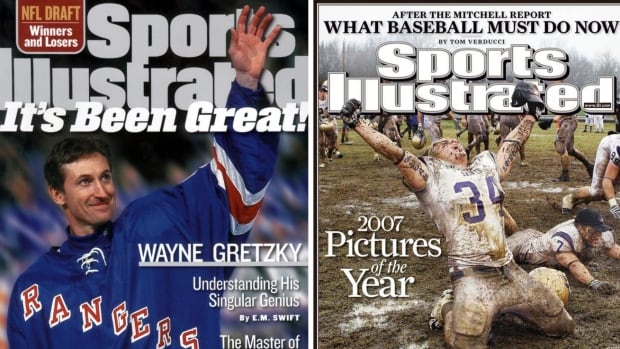
20 Jan Mass layoffs at Sports Illustrated cast doubt on future of storied magazine
First published in 1954, Sports Illustrated could be characterized as a part of sports history.
But word of mass layoffs at the magazine on Friday had employees and observers worried for its future.
The planned cuts at Sports Illustrated include possibly all of its union-represented workers, the union said in a social media post Friday.
In an email to employees Friday morning, the Arena Group, which operates Sports Illustrated and related properties, said that its parent company, Authentic Brands Group (ABG), had revoked the marketing licence that allowed it to publish the magazine.
“As a result of this licence revocation, we will be laying off staff that work on the SI brand,” the email said.
Arena Group said in a filing earlier this month it failed to make a $3.75 million US payment to ABG, effectively ending its licensing deal.
Groundbreaking publication
Innovative for its full-colour photography covering the week’s major sports events, and for nationalizing conversations around multiple major sports leagues, Sports Illustrated has been called the “gold standard” by some sports journalists. The award-winning magazine helped launch the careers of sportswriting greats like Gary Smith and Frank Deford.
Michael Farber was a senior writer at the magazine from 1994 until 2014, when he retired. He continued to work as a special contributor, a role he says he still has, as far as he knows.
“It’s like people who went to Harvard are always proud that they went to Harvard,” Farber said. “If you worked for Sports Illustrated for a reasonable length of time, you’re proud of your alma mater.”
He describes the planned layoffs as “death by 1,000 cuts.”
In a statement Friday, ABG said that “Sports Illustrated will continue.”
“Authentic is here to ensure that the brand of Sports Illustrated, which includes its editorial arm, continues to thrive as it has for the past nearly 70 years,” the statement said. “We are confident that going forward, the brand will continue to evolve and grow in a way that serves sports news readers, sports fans and consumers.”
Ownership struggles and controversy
Sports Illustrated has struggled in recent years.
After being acquired by Meredith publishing in 2018, the magazine laid off much of its staff the following year when Meredith sold the magazine’s intellectual property to ABG for $110 million US.
Initially a weekly publication, the magazine was reduced to biweekly publishing in 2018, then monthly in 2020.
“I think Sports Illustrated’s mistakes were not adjusting to the digital age quickly enough,” said Farber.

Yesterday’s announcement comes just months after a controversy at the publication involving artificial intelligence.
In November, Sports Illustrated was caught publishing, and later deleting, stories with fake author names and profile photos generated by artificial intelligence. In the wake of the controversy, Arena Group fired chief executive officer Ross Levinsohn the next month.
Future is unclear
The potential layoffs would be the latest of many in the media landscape. The news comes just a day after the Los Angeles Times’ union said the newspaper plans to lay off a “significant” number of journalists. In Canada last summer, BCE Inc. announced it was cutting 1,300 positions — about three per cent of its workforce — and closed or sold several radio stations.
In a statement to CBC News, Arena Group said the company is in active discussions with ABG.
“Even though the publishing licence has been revoked, we will continue to produce Sports Illustrated until this is resolved,” the statement said. “We hope to be the company to take SI forward but if not, we are confident that someone will. If it is another business, we will support with the transition so the legacy of Sports Illustrated doesn’t suffer.”
While Farber calls the layoffs “bleak,” he says he, too, still has hope.
“I hope that if there are people willing to tell stories … you might have to look a little harder to find. But it’s still out there,” he said. “And it’s now up to readers to find it, and it’s up to writers to produce it.”
